The term ‘Industrial revolution’ has shaped the way the economic world works now. From mass laborers, we have moved to mass production and the origin of this transformation in Europe. During the 18th century, as new technology replaced humans, mass production started in less time and the economy of Britain went up. It started with Europe but later the whole world got involved.
The world witnessed rapid change in the way industries used to function, the advancement in metal (iron and steel), textile, electricity, etc. industries, benefited the businesses to an incredible level. Earlier due to the immense amount of work, companies used to exploit the workers by making them work for hours on very low wages. The machinery installed by the industries replaced the old traditional method of production and moved the industries to become more profit-oriented mass production based.
In this blog we will read about second industrial revolution, fourth industrial revolution and other important industrial revolution inventions. Let’s start with the blog !
Table of Contents
History
The world was very different before the Industrial revolution. Earlier, Agriculture was the only source of income for many in England.
Laborers used to work day and night to grow their crops. During the season of plowing and harvesting, the demand for laborers was usually high. Because of the intense work involved in agriculture, it was the largest employment sector in England. Although labor in agriculture was a difficult job to do, It had some benefits attached to it. The constant high demand for food provided a decent amount of income to farmers and their families. Also, people could store some food for their use.
The biggest challenge was the uncertainty of the factors responsible for crop success like weather, quality of soil, etc.
Due to the limitless hard work required in farming, the need for development in the agriculture sector through innovations and inventions was felt. The demand for agricultural revolution during the mid 18th century and innovations through this era facilitated the farmers in farming.
Causes

Several reasons caused and supported the industrial revolution in England. First of all, due to the good product quality produced in England, the demands of England’s manufactured goods increased across some parts of Europe. Also, as the transportation facility to other countries was only limited to ships, supremacy in the Naval army helped The industries in Britain to export their goods to other countries.
Although, the French Revolution caused instability in many parts of Europe. England was having a more peaceful atmosphere than any other country in Europe. That helped England to focus on its development. England’s stretched colonial empire across the most resourceful parts of the world like India provided the required resources at very low prices. Also, England itself was a great source of good quality Iron and Coal.
England also had plenty of cheap laborers available to work in its industries. These laborers were the small farmers who left the farming and now moved to the city for better work opportunities. Also, artisans from different countries started living in England and the working population increased. All the factors were in the favor of England’s Industrial revolution. And that made England a very powerful country motivating it to move in the next phase.
Impact
In this segment, we will read about the impacts that Industrial Revolution had on the economy. Let us begin.
Mass Production of Goods
Now goods were being produced on a large scale. As the demand across the world was increasing for a variety of goods. The textile industry was at its peak. Moving from hand-spun goods to large-scale production through inventions, made the clothes cheaper in England, and the demand for clothes from England increased. To support the increasing demand, John Kay came up with his invention Flying Shuttle, which could weave wider clothes easily and faster.
But the demand for yarn was the problem. Also spinning was a major issue during that time. To solve this, James Hargreaves came up with his invention spinning jenny that could perform the work of several spinning wheels. But at that point too. The invention needed humans to operate them. To make it more automatic Richard Arkwright came up with a Water frame that could be operated through a water wheel.
Samuel Crompton’s spinning mule acted as a connection between the Water frame and jenny.
Income Increased
The income value of industry owners in England increased as they were exporting the goods across the world.
Standard of Living
This revolution massively impacted the standard of living of the people. Two different classes that were rich and poor were facing two different realities. The living conditions of the rich were improving as they were working in the management departments, they were paid well and worked for fewer hours than the worker class.
The condition of the working class was awful, the condition of their workplace was bad. Also, they were made to work for several hours on very low wages. They had to face depression in their families due to the lack of food availability. circumstances degraded their living condition for the worse.
Increase in Population
As the other parts of Europe were struggling to live peacefully, England’s peaceful atmosphere attracted many foreigners, and new societies were formed due to the increased immigration from different parts of the world.
Urbanization
After the industrial revolution, many people left farming and moved to the cities. This period of development gave the agriculture sector various machinery after which only one man was required to operate it. And others had no work to do so they started moving to cities, and industries became their new employer.
Growth in Agriculture
After the new machines were installed in the farms, the production of the crop improved, And agriculture witnessed huge growth.
National and International Market
Markets at the international level industries from various countries. The system of import and export gave birth to the banking system.
Social Impacts
Let us see what kind of social impacts Industrial Revolution had on the economy.
Movement of small farmers from villages to cities
Although the small farmers migrated from farms to industries in order to search for better work. But during this period, they faced several challenges in order to even fulfill their basic necessities.
Degradation of women status in society
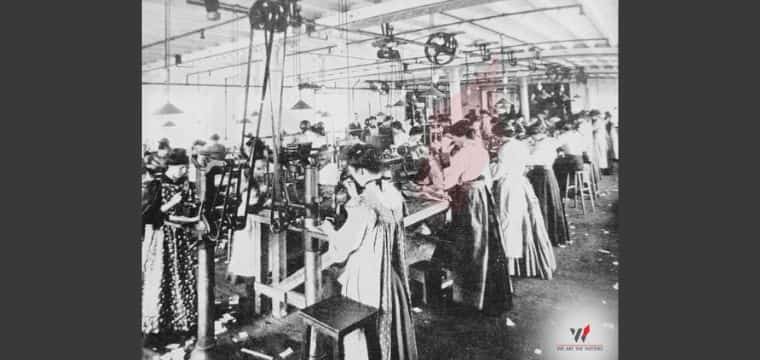
The industrial revolution adversely affected women’s status in society. The biggest challenge for the working class was the low pay that they received even after working day and night. To support families, women, and children also worked at the same workplace but were treated worse. Women were seen as less skilled than men and were paid less. Women had to work as domestic workers in rich people’s houses and in coal mines and factories to support their families.
Increase in crimes and moral downfall
As the pay offered by industries was low, people had to leave their job. This era also saw a decrease in the employment rate and an increase in the rate of crimes. People were depressed in families and started involving in Alcoholism, robbery, and various crimes.
Need for raw material
The Industrial Revolution increased the need for raw material as production became efficient. In order to fulfill the demands of the of raw material, European countries started their venture for new colonies.
Capitalism in England
Rich were getting richer and the condition of the poor was getting worse. This was the time when Karl Marx came up with the idea of socialism.
First Industrial Revolution
The first industrial revolution started in 1760 and ended in 1830. The method of production saw the transition from hand to machine. The textile industry witnessed mass production during this time. Power was generated through water, coal, and steam. James Watt’s invention the steam engine was the engine used during this time.
First Industrial revolution inventions were:
Spinning Jenny
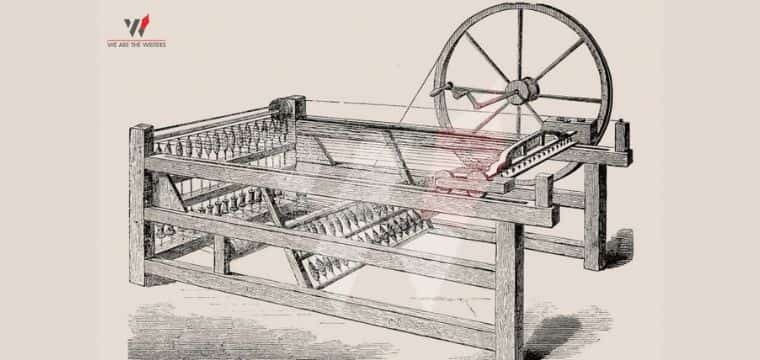
The invention of James Hargreaves in 1770, was used to spin wool and cotton. The machine improved the process of cotton spinning by making it more efficient.
Water Frame
Water Frame, a spinning machine that was developed by Richard Arkwright. One of the industrial revolution inventions revolutionized the functioning of the textile industry. This machine was used to spin cotton without the need for manual labor. The invention used the force of water to move the machine and perform its function.
Spinning Mule
Samuel Crompton’s spinning mule could produce eight spools of yarn all at once. Thi revolutionized the cotton industry and took away the jobs of many small workers who were paid to make a spool at a time.
Cotton Gin
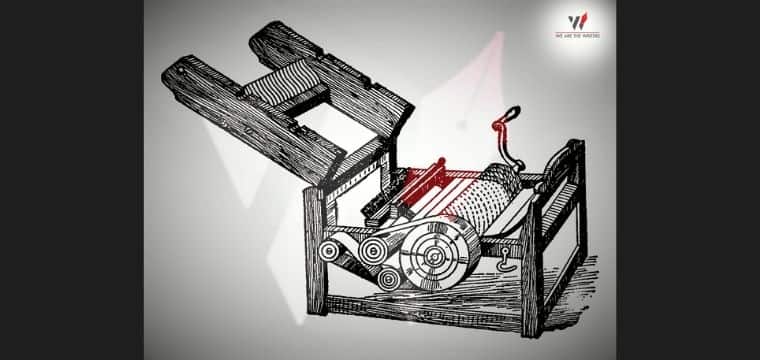
Cotton Gin invented by Eli Whitney made the extraction of seeds from cotton fiber easy. Saving a lot of time for the operator. Eli Whitney was a US-born inventor.
Keep reading to learn about the second industrial revolution, fourth industrial revolution and major industrial revolution inventions in those periods.
Second Industrial Revolution
The second industrial revolution proved to bring a lot of technological advancement to Europe. The second Industrial revolution started in 1850 and ended in 1914 when the first world war began. The method of production moved from machines to more automatic machines, as part of the second industrial revolution inventions. Steel was the major element produced massively during the second industrial revolution.
Bessemer’s Process
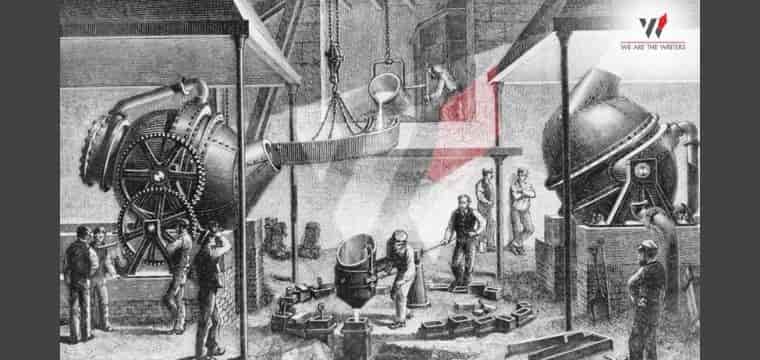
In second industrial revolution, the process that made the massive production of steel possible was developed by Henry Bessemer. Henry Bessemer was the British inventor, who developed Bessemer’s process. The process facilitated the expansion of railroads throughout England and its colonies. The invention was a turning point for the second industrial revolution worldwide. The second industrial revolution inventions included automobiles which changed the transportation industry to a whole new level.
The railroad expansion led more people to immigrate in the second industrial revolution. The number of immigrants from Eastern, Southern Europe, and Asia was relatively high.
The major source of power leveraged in the second industrial revolution inventions were petroleum and electricity. Internal combustion inventions replaced the steam engines in Europe. This era, the second industrial revolution, was the golden period for technological advancement in history. Various new industrial revolution inventions emerged in the world during that time.
The second Industrial revolution inventions were:
Automobiles
Automobile industry developed more in the second industrial revolution. As the mass production of steel helped it to grow. Henry Ford played a major role in the development of demand for automobiles across the world.
Henry Ford was not the first one to develop the car, the first one to do it was German Nicolaus Otto who invented the first stroke engine in 1861. The cars developed by Henry Ford were affordable and were produced on a large scale during the second industrial revolution. Cars have been one the most important second industrial revolution inventions.
Railroad Expansion

Facilitated by the mass production of steel saw its peak during the second industrial revolution. Especially in the United States where around 45000 miles of track was laid before 1871. Another 170,000 miles were added in the railroad expansion of the state between 1871 and 1900. In the second industrial revolution, the developed transport system in Europe made the import-export facility easier and made the countries economically better.
Development of Electricity
Electricity paved the way for a new technological advancement in the second industrial revolution and later proved to be a great help in solving the problems economically.
The second industrial revolution inventions, the electric motor and dynamo were invented by an English scientist Michael Faraday in 1821 and 1831 respectively. However, electricity was not first utilized for power transmission. Instead, it changed the way communication worked for people when the first telegraph was invented by Samuel Morse during the second industrial revolution. Scientists like Joseph Swan and Thomas A. Edison also contributed to the development of electricity by inventing the light bulb.
On one side where the industries were experiencing benefits of the second industrial revolution inventions. The working-class was struggling to live peacefully. People were losing jobs as things were becoming automatic with the new second industrial revolution inventions. Later during the second industrial revolution, the government did come up with laws to improve the condition of the working class and that led to the expansion of the middle class.
We have seen the second industrial revolution inventions. In the following section, we will look at the fourth industrial revolution inventions.
Fourth Industrial Revolution
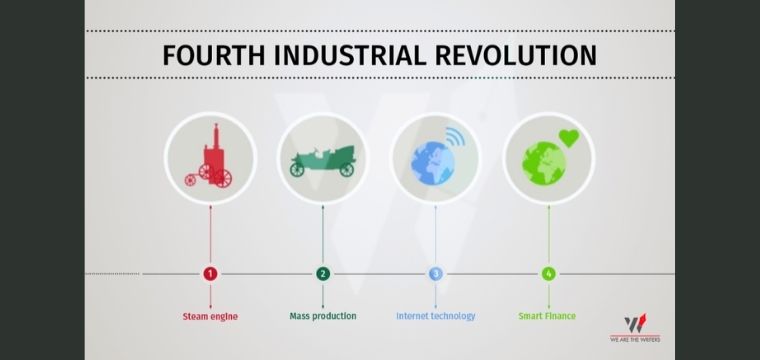
The fourth industrial revolution also can be seen as an opportunity to improve income levels and the way of living. The technology has worked as a life-changing experience for the people who could afford it. It has improved people’s lifestyle by keeping everything under their tips. Ordering to travel or eat or booking a seat in the cinema hall.
Everything can be done with the new digital era. And the fourth revolution is building on such technologies. It is believed that in the upcoming years, fourth industrial revolution inventions will provide long-term efficiency and productivity to its consumers. As the new technology will be less power consuming, transportation will become cheaper and the supply chain will work more efficiently globally, the cost of trade will diminish and will open a new opportunity for the development of new markets and their growth.
But we cannot deny the fact that the fourth industrial revolution inventions will act as a substitute to humans in many workplaces and it is a thing to worry about for most people.
Below are some promising fourth industrial revolution inventions, that will change the world in different ways.
3D Printing
As a major part of the fourth industrial revolution, 3D printing may be an important aspect that can come to mind. The primary job is to solidify a material through the computer-controlled process to design 3-D objects.
The technology tends to be a life-saving weapon in the near future and contains numerous spectacular applications. 3D printing plays a critical role as it is one of the major fourth industrial revolution inventions which can change the world in many ways.
Various sources claim that the fourth industrial revolution involves digital transformation worth $100 trillion. The basic aspect of 3D printing is it can reshape the complete sector and can help in overcoming the impact on the environment or planet. Thus making it at the forefront of the fourth industrial revolution.
Unveiling a massive amount of data with big data
Big data is a very cognitive way to get more detailed information and to unfold the meaning as well the aspects of unstructured and huge amounts of data. When traditional ways such as handling techniques and mining of data do not seem to work well, this process is generally made in use.
Due to the tracking capabilities of the entire media consumption by the people, smartphones are playing an important factor in the fourth industrial revolution. Big data is vital for the fourth Industrial revolution due to its systematic functioning.
Profits of billions of dollars in the upcoming years are evident with big data being a crucial part of the fourth industrial revolution inventions due to its systematic and improved usage of big data. In order to cater to the needs and power of big data and use it in a proper way, the creation of new jobs is high expected in the future.
Artificial intelligence substituting human intelligence
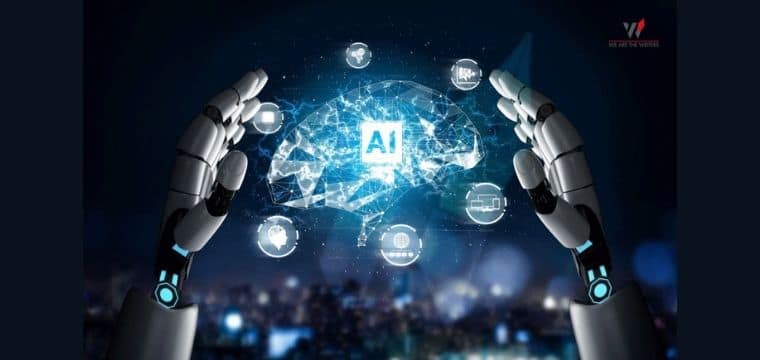
AI could be an out-of-the-box factor to go on to solve major problems around the globe in the fourth industrial revolution. In the current situation, the fourth industrial revolution, this technology is growing fast and is at an advanced stage of development and understanding.
The application of AI to a wide range of industries and commercial and social sectors is quite evident in recent times. The preliminary driving force of the fourth industrial revolution is considered to be AI. AI has left a deep impact on the political world with businesses as well as homes. From taking care of aged people to automatic cars, AI is ruling the world.
Another important aspect is the rapid development in machine learning and AI, the fourth industrial revolution inventions, have the potential to create a deep impact on humans through several processes, like accounts and privacy.
More Advanced Robotics
In the fourth industrial revolution inventions also include robotics in a field which is growing significantly and is expected to do well. Robots are most likely to replace humans and activities by them in the upcoming generations.
This creative technology is subsequently expected to take over low-skilled process works to generate work processes in the entire world. Robots can also make a successful contribution towards a better work-life and balance people so that people can pay attention to more innovative techniques instead of tasks being repeated.
Conclusion
The industrial revolution since the beginning has always broadened up the boundaries of human experience, if we compare both industrial revolution inventions. The first and second industrial revolutions have witnessed a drastic change in terms of technology and society. Both have shown us that technology will make society more automated. And so the third industrial revolution witnessed when things became digital.
Computers came into our lives and connected the whole world through the internet. The world will see changes in the future that humans have never imagined, the fourth industrial revolution which is expected to blur the boundaries between the biological world and artificial intelligence. These industrial revolution inventions will change the way of human functioning.
This will become an era of robotics. Where the world will work on artificial intelligence. We can still have glimpses of that. Many artificial intelligence chatbots are developed that are helping people through counseling, being their friends, and solving people’s problems more effectively. The fourth industrial revolution will not only affect the world on the industry level. Instead, it will change the fundamentals of our way of living and working.
However, it is also believed that The fourth Industrial revolution will also be a great challenge for the people who are not skilled. As many jobs are at risk of artificial intelligence replacing them. So, the world should prepare itself for the upcoming technological advancement. On the other hand, economic reformers believe it to be an era of opportunity for all the sectors to act as an inclusive community with the help of converging technology. It aims to help everyone including leaders, policymakers, and people, and make a human-centric society. This blog ends here. Keep on reading our other blogs!





 WhatsApp
WhatsApp